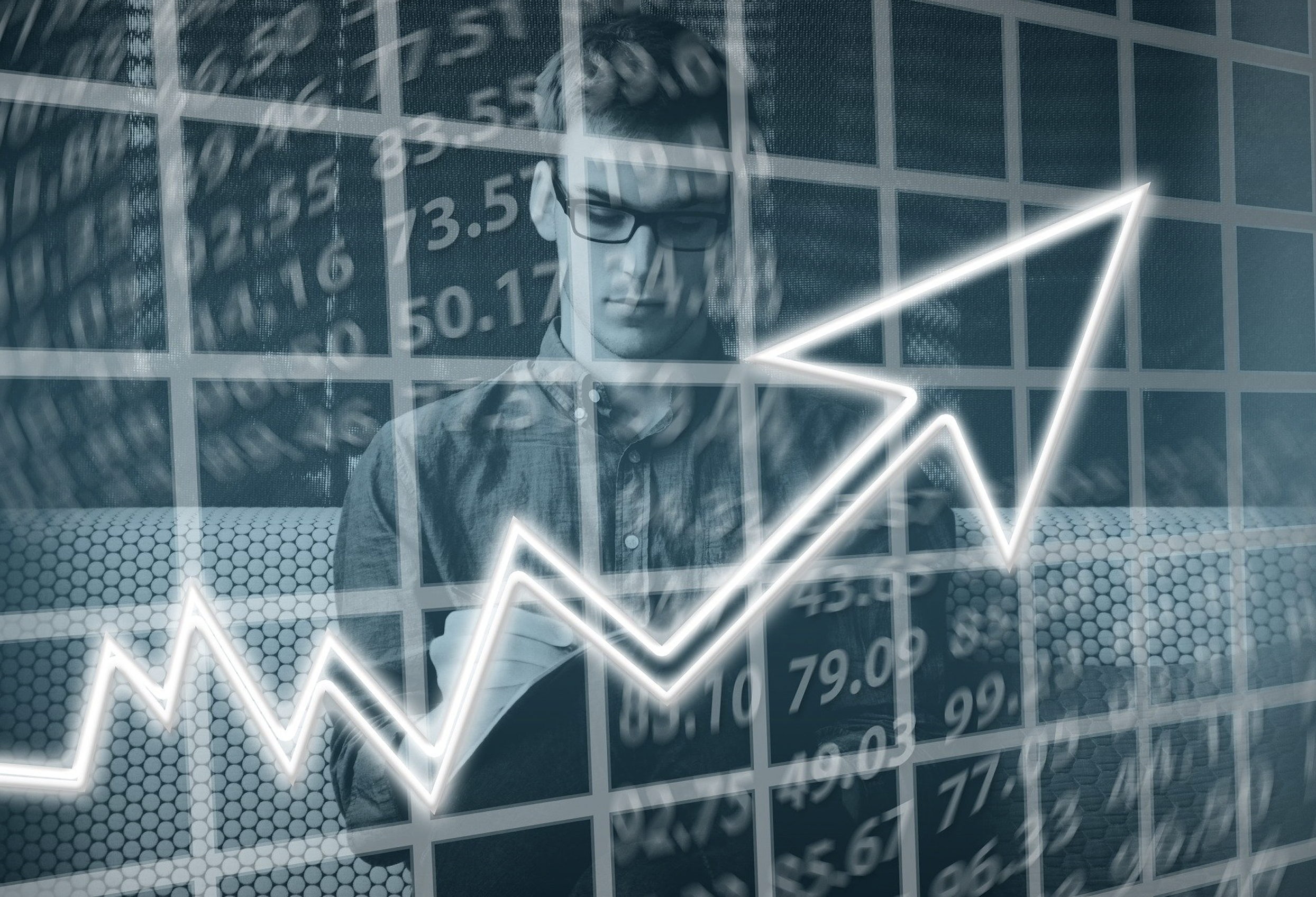
Spencer
Oct 25, 2021 14:08

The US dollar nudged higher against a basket of currencies on Monday, August 9, 2021, reaching its highest level in more than two weeks, bolstered by buoyant US statistics, even as traders maintained a tight eye on the spread of COVID-19 cases in the US.
The dollar surged substantially in the aftermath of the August NFP report, with the encouraging jobs data supporting the belief that the Federal Reserve may act more rapidly to tighten US monetary policy.
Fed officials have made a recovery in the labor market a prerequisite for tightening monetary policy.
The dollar was down 0.1 % on the day as trading began in the first week of August against a basket of currencies, but it remained near to four-month highs.
Following a 0.4 percent surge at the close of last week, the dollar climbed as high as 110.37 against the Yen.
Following the jobs report release, the benchmark 10-year Treasury yield increased by eight basis points to a two-week high of 1.3053 percent on August 6.
On Friday, solid US jobs data spurred a rise in US bond yields, increasing the US currency.
Last year's dollar rally overlapped with the Federal Reserve cutting the federal funds rate to zero and strengthening its toolkit to combat the Covid-19 outbreak.
The Fed's balance sheet grew from $4 trillion to more than $7 trillion. Dollar pressures then increased in the summer, when the Fed unveiled changes to its framework for conducting monetary policy.
Eventually, the USD was brought to its knees by the deficit spending and central bank asset purchases undertaken to combat COVID.
Not just the United States, but every other major economy, made comparably large fiscal and monetary initiatives, so the fundamentals of the dollar appeared to be no worse than those of the Euro or the Yen.
However, all this changed in 2021. Payroll growth in June and July was revised higher, and Fed Chair Jerome Powell had emphasized that job growth was the crucial indicator for the central bank's assessment of the economy's progress. Fed officials have made a recovery in the labor market a prerequisite for tightening monetary policy.
According to the August 2021 Non-farm payroll data, jobs expanded by 943,000 in July, exceeding economists' projection of 870,000. In addition, May and June's figures also moved upward.
At the start of the second week of August 2021, the dollar was euphoric as a string of positive US job numbers cemented predictions for the US. The Federal Reserve may soon begin to withdraw its huge coronavirus-driven stimulus.
The thought of the Fed reducing bond purchases pulled down US bond prices, rising yields and harming other safe-haven assets that had gained from low US debt returns, such as the Swiss franc and gold.
Atlanta Federal Reserve Bank President Raphael Bostic, the first Fed speaker following the jobs data, said that he expects a bond-purchase taper to begin in the fourth quarter but is open to an earlier start if the job market maintains its recent blistering pace of development.
Boston Federal Reserve Bank President Eric Rosengren was likewise straightforward, stating that the United States central bank should declare in September that it would begin cutting its $120 billion monthly acquisitions of Treasury and mortgage bonds in the coming months.
This year, a few emerging-market currencies have maintained their advances against the US dollar. However, this list may be reduced in the coming weeks as the highly contagious Delta variant creates a new sinkhole for emerging countries.
Countries with low vaccination rates, such as South Africa and Russia, may feel compelled to tighten regulations that may harm economic activity.
The rand and ruble, once the greatest performers of 2021, were among those that dragged an index of emerging-market currencies lower in June for the first time in three months.
South African and Colombian currencies are the most susceptible because their central banks are not raising interest rates to build a real rate cushion against the USD.
According to analysts, the Brazilian real and the Mexican peso would be more resilient as their central banks tighten policy. Even as Covid-19 cases remain at record highs, the real has surpassed all of its emerging peers this year.
Southeast Asia is also feeling the effects of the Delta strain's proliferation. For example, sluggish tourism revenue is expected to weigh on Thailand's baht, according to experts.
Meanwhile, the Indonesian rupiah plummeted to its lowest level since April as the country imposed the most stringent restrictions yet on the economic capitals of Java and Bali.
The coronavirus outbreak has produced few winners, but one sticks out: the US dollar. As investors became aware of the magnitude of the economic shock caused by COVID-19 early in 2020, they dumped risky assets such as equities and bonds in favor of cash.
However, not just any money. Investors from all around the world desired US dollars. Dollar demand was so great that the US. The Federal Reserve established new swap lines to provide dollars to central banks in foreign countries. Investors flocked for dollars from Shanghai to Sao Paulo.
In some respects, the demand for dollars was unsurprising: investors flock to greenbacks whenever the global economy appears to be at peril.
Moreover, the rising demand for dollars occurred even as the United States government took extraordinary moves that, according to academic economics, should have weakened the dollar's value.
Massive deficit-financed government spending initiatives combined with a massive growth of the Federal Reserve's balance sheet are the types of policies that frequently devalue a currency. As a result, the dollar increased in value relative to its rivals rather than falling in value.
In 2020, the benchmark DXY index, which tracks the dollar against a basket of currencies from other advanced nations, rose by several percentage points.
The dollar's rise in value during the COVID crisis comes after many analysts predicted for years that the dollar would lose its standing as the world's safest asset.
Some commentators claimed that excessive use of US sanctions would reduce other countries' desire to hold dollars, fearing the long arm of the US. Treasury. Others warned that large government deficits in the United States would erode investor confidence in the dollar.
There are two ways to explain this:
When the United States Federal Reserve lowers the benchmark federal funds rate or discount rate, reduces minimum reserves for banks, or purchases Treasury bonds on the open market, it implements expansionary policies. Another type of expansionary monetary policy is quantitative easing or QE.
A second reason for the dollar's dominance points to income disparity as a driving factor. In other countries, rising income inequality drives greater demand for savings, some of which must be stored in foreign assets.
The most visible example of this is China, which has amassed a massive stockpile of dollar assets, particularly US dollars. Beijing has achieved this through a growth plan that keeps household spending at an extremely low level.
Except for a few minor city-states and oil producers, China's households buy less than any other country in the world as a share of GDP.
Savings account for a disproportionate chunk of China's income, particularly savings by Chinese enterprises and the government. Much of this savings, in turn, is deposited in the form of dollars.
If China's income inequality were lower, and households were given more resources to spend, whether through lower taxes, a better social safety net, or increased salaries, there is little doubt that China's corporate savings rate would fall, as would demand foreign currency reserves.
Furthermore, the Chinese government's $3 trillion in foreign exchange reserves would be depleted.
Why do the Chinese choose the US dollar over the currencies of other advanced economies, such as Euros, Yen, Pounds, or Swiss francs?
Eurozone governments issue a wide range of debt securities; however, unlike in the United States, where all treasury bonds are treated the same, not all euro sovereign bonds are the same.
When you look at the bigger picture, the market attempts to reconcile signals of a strengthening labor market with mounting Delta fears. The market appears to be waiting for Delta to resolve and how swiftly it does so.
Coronavirus infections and hospitalizations are at a six-month high in the United States, thanks to the emergence of the Delta strain. The impact of the Delta variant in the United States has heightened concerns, as COVID-19 infections are also increasing in Asia.
A rise of coronavirus infections jeopardizes the Biden administration's promises of a quick economic recovery, with Wall Street taking a beating and several major forecasters beginning to reconsider their too optimistic forecasts.
The administration is actively monitoring the economic dangers of the Delta strain, and senior US officials have recently suggested that local restrictions may have to be reimposed in reaction to the outbreak.
The White House highlighted expectations that the US economy would flare back to life as consumers soon reverted to pre-pandemic spending as the vaccination drive advanced through the spring and summer.
However, the Delta version may call those lofty hopes into question, jeopardizing the recovery in multiple dimensions. First, the ongoing pandemic could restrict consumer spending if concerns about the safety of returning to certain activities resurface.
The variant's spread elsewhere has already harmed US supply chains, and shortages could worsen inflation by raising production costs.
A rise in unvaccinated hospitalizations and fatalities offers a particular problem for the Biden administration in more conservative parts of the country, where opposition to further regulations is strong and federal humanitarian money is running out.
Many experts have warned that a low net national saving rate in the United States raises the possibility of a dollar crash. They anticipate large fiscal deficits leading to trade deficits, making the United States heavily reliant on foreign financing. As a result, international investors may become hesitant to hold an expanding supply of dollars at some point.
Even though interest rates in the United States are approaching historic lows, most European government bond yields are negative.
Furthermore, they are expected to remain below US yields for a long time. The rationale is that European economies have been struck harder by the Covid-19 pandemic than the United States, and there is a bigger risk of deflation. Accordingly. The European Central Bank is considering further loosening of monetary policy.
In many views, the dollar will stabilize against the euro and may even strengthen against it later this year.
The trend towards the middle of August 2021 will see a significant amount of event risk originating in the United States. The calendar, however, is prorated:
July's US inflation report (CPI) will be announced on August 11, with elevated inflation rates projected to prevail. Also, on August 11, the US federal government's monthly budget statement for July will be released.
On Thursday, August 12, weekly jobless claims are forthcoming, as is the July US producer price index (PPI), the cost of goods at the factory gate.
The August US Michigan consumer sentiment survey is scheduled for Friday, August 13. In addition, the report will provide the most recent update on consumer inflation expectations.
Another factor in favor of the dollar is the Chinese government's reluctance to open its financial markets so that cash can freely flow in and out of the nation. As a result, there is minimal danger of the US dollar losing its status as the world's reserve currency.
Given the economic shock of COVID, China's government will be much less likely to relax capital controls, thus discouraging the use of the yuan.
The dominance of the dollar is unlikely to be challenged anytime soon.
In the end, the dollar's performance will be primarily determined by how quickly the US economy returns to normalcy. Even if the recovery takes longer than expected, any weakening of the dollar is likely temporary.
Investors are looking at a wide range of factors, from global COVID-19 infections to yield disparities, to decide if the US currency will continue to rise.
The dollar is up 4% from its 2021 lows and is one of the world's best-performing currencies this year, bolstered by the Federal Reserve's hawkish move last month, growing inflation, and safe-haven buying fueled by COVID-19 fears.
Because the dollar plays such an important role in the global financial system, its movements have repercussions across many asset classes and are actively monitored by investors.
An extended period of dollar strength would be a double-edged sword for the United States, helping to tamp down inflation by strengthening the currency's purchasing power while dampening exporters' balance sheets by making their products less attractive abroad.
On the other hand, the Dollar strength would continue to push down currencies such as the euro and British pound, thereby boosting recovery in those nations.
Investors are watching several factors to determine the dollar's trajectory. They are:
Some investors believe the dollar, a popular safe haven in times of uncertainty, will climb if the Delta variant of COVID-19 spreads and market risk aversion develops.
Concerns over COVID have already aided the dollar's gains against currencies in nations where the Delta variation is prevalent, such as the Australian dollar and the British pound. Those gains, though, could be reversed if coronavirus fears subside in the coming months.
While some investors are apprehensive that the US recovery is stalling, it surpasses the recovery in Europe and other places.
As evidenced by indices such as faster manufacturing sector growth and inflation, this growth disparity is one of the forces pushing the dollar higher.
As we see more dispersion, there is still a rationale for the dollar to strengthen.
Despite recent declines in Treasury yields, the spread between real yields on US government paper and some foreign bonds has increased, increasing the attraction of dollar-denominated assets. Real yields are the cost of borrowing after adjusting for inflation.
The net short position of speculators in the US dollar has dropped to its lowest level since March 2020.
The short dollar was the most crowded trade in the globe through the first quarter of 2020.
The waning pessimistic attitude may mean that there is less fuel for additional dollar increases. But, at the same time, when the dollar and other currencies are correcting, they tend to overshoot in both directions.
While there is not a 100% way to tell how the USD will react to the Delta variant, analyzing the greenback through various measures can present an overall picture for the upcoming months.
The dollar's rise will largely depend on the overall US economy and how the government will handle the Delta variant.

Oct 25, 2021 14:08

Oct 25, 2021 14:09